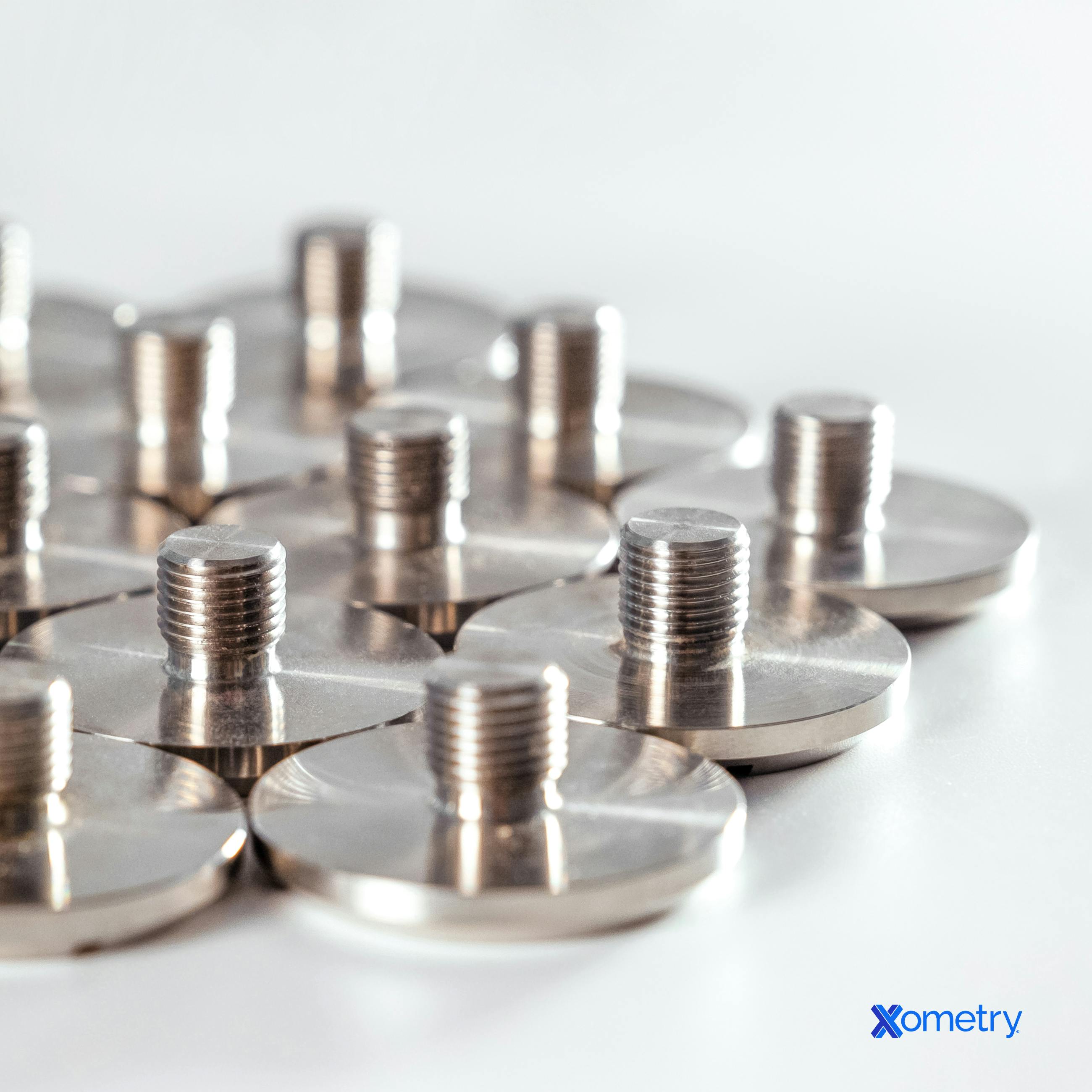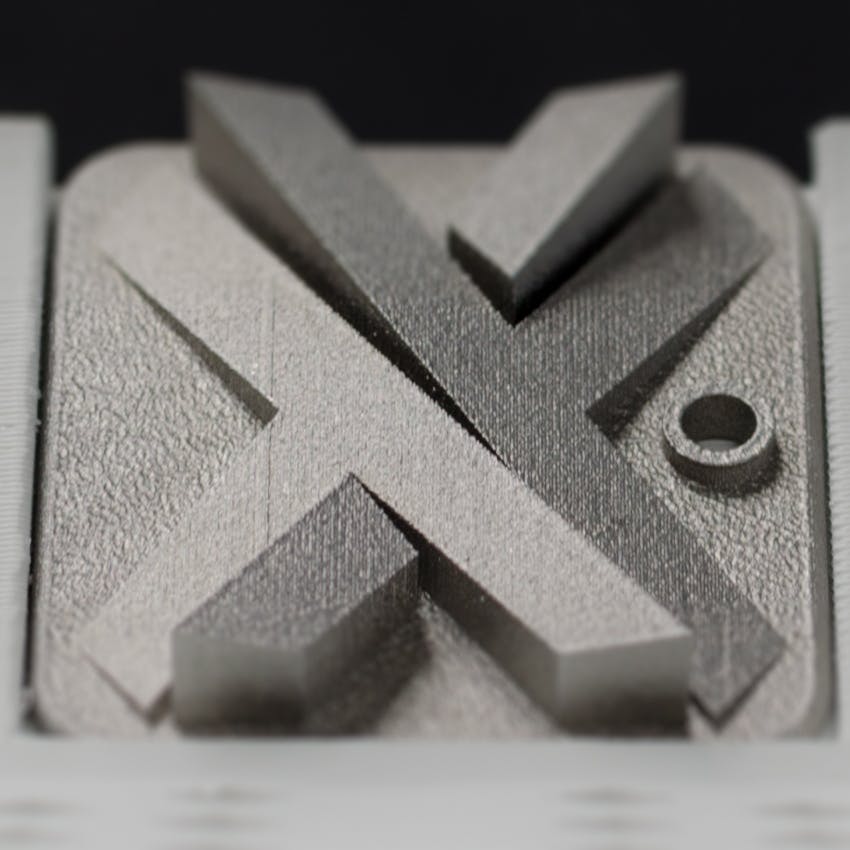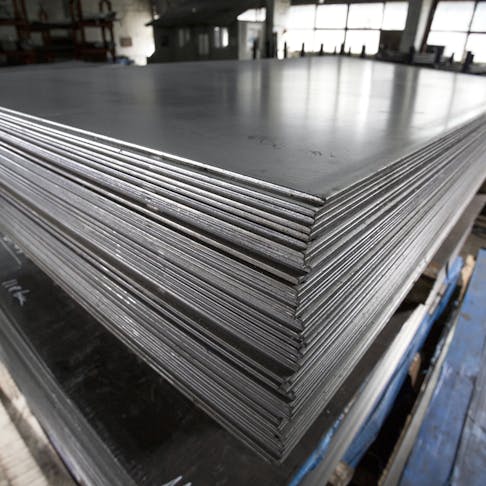Although there are hundreds of stainless steel grades out there, not all of them enjoy the same popularity as 18/8, 316, and 304 do. These three in particular are often picked by our customers and seem to be everywhere you look, from steel beams on construction sites to pots and pans sitting in kitchen drawers. While they have their fair share of similarities—each is a type of stainless steel, after all—they do have differences to be aware of that help determine where they’re best suited in the world. We’ll give you the lowdown on these stainless steel grades below.
What is 18/8 Stainless Steel?
Take a look at your stovetop while you’re cooking, and you’ll likely see 18/8 stainless steel in action. This kind of stainless steel is abundant in cookware, kitchen utensils, and food processing equipment, thanks to its durability and how easy it is to make. Its name points to the steel’s specific composition, which has 18% chromium and 8% nickel—although it doesn’t mention the other portions that make up this material, such as the trace amounts of carbon (normally 0.08%) and the 50–70% of iron that’s included.
It stands out for its corrosion resistance, casting, and rolling abilities. It’s not magnetic, either. That being said, it’s not the type you want to use when working and living in a marine or chloride-filled environment.
Making 18/8 stainless steel requires a literal melting pot of ingredients and will involve mixing and melting chromium, nickel, iron, and a tiny portion of carbon. Once it becomes molten, manufacturers can pour it into casts, which will harden into solid ingots, billets, or any other form that’s needed. It can then go on to rolling, forging, and annealing processes to create a strong and nicely finished end product.
Advantages and Disadvantages
To see where 18/8 stainless steel’s strengths lie, take a look at the following pros:
- It has decent corrosion and oxidation resistance (though not the best out of all steel grades).
- Because its surface is non-reactive, it’s safe and strong enough to use with food in kitchens and restaurants.
- It’s a pretty durable stainless steel and it has good resistance to impact and abrasion.
- Price-wise, it’s more affordable than stainless steel grades like 316.
Equally, there are also some disadvantages to using this type of steel, such as:
- As mentioned, although it has some corrosion resistance, it’s not faultless and will struggle to cope in marine environments or places with large amounts of chloride.
- It’s non-magnetic, which makes it useless in situations where magnetic properties are needed
- Some environments will overwhelm it (like chloride-heavy places or instances where it’ll be exposed to high tensile stress), and this can lead to cracking from stress corrosion.

What is 304 Stainless Steel?
304 stainless steel can hold the official title for the most popular grade overall and is certainly a hit with Xometry customers. That’s thanks to its corrosion resistance and ability to handle high temperatures and corrosive chemicals. Whether it’s used in sheet form or molded into a fuel tank for a car, it’s a very versatile version of stainless steel due to its unique blend of alloys. Similar to 18/8 steel, you’ll find about 18% chromium and 8% nickel in its makeup, but oftentimes, 304 will have other inclusions, such as iron, carbon, silicon, and manganese. When these other small traces aren’t included, the names 304 and 18/8 are often used interchangeably because they have the same composition.
A few other characteristics that make this stainless steel grade so sought after are its corrosion resistance, high tensile strength, and its ability to be welded, molded, and formed. 304 even has its own subcategory of grades, including 304L and 304H, which call out versions of the steel that have low carbon and high carbon, respectively.
Just like 18/8 stainless steel, 304 is made by melting chromium, iron, nickel, and any other trace alloys into a furnace to create a molten mixture. Then it’s funneled into billet, slab, or other forms to harden. The forms can then be hot rolled, annealed, heat treated, polished, and/or cut to size.
Advantages and Disadvantages
Below, we’ve listed some of the benefits that come with using 304 stainless steel:
- It has a higher tensile strength than 316.
- It can be used for everything from cookware and water piping to medical devices.
- Its cost is lower, especially if corrosion resistance isn’t a top priority for you.
There are also a few downsides to using 304 stainless steel, which we’ve mentioned below:
- It has okay corrosion resistance thanks to the chromium in its composition, which forms a protective layer of sorts against oxygen diffusion, but it suffers in marine environments.
- It can handle heat pretty well, but after 425 ℃ it’s prone to corroding.
- It’s softer, and so it doesn’t excel when it comes to scratch resistance—keep this in mind if you’re after a stainless steel that won’t show marks.
- Both extreme heat and cold can lead to its demise and speed up corrosion.

What is 316 Stainless Steel?
After 304, 316 is the most popular, and it stands out from the crowd because of its top-notch corrosion resistance. This gives it a one-up over the previously mentioned stainless steel types, whether you’re using it in a building or subjecting it to marine environments. It has the expected mixture of 16–18% chromium, 10–14% nickel, and a small percentage of carbon, but it uniquely includes about 2–3% of molybdenum.
When it comes to choosing 316 stainless steel, you’ll notice that it, too, has its own grading system, including F, H, L, and N versions, which point to lower and higher carbon concentrations (L and H) and great machinability and high nitrogen (F and H). At Xometry, in addition to machining and laser cutting stainless steel 316L, we can also 3D print it via direct metal laser sintering (DMLS).
316 is made in an almost identical fashion to 18/8 and 304, except the ingredients vary every so slightly. On top of the nickel, chromium, and carbon, you’ll also mix in molybdenum and very small amounts of manganese, silicon, and occasionally nitrogen. Manufacturers will watch the amounts like a hawk to ensure this correct composition is maintained so they can reap the benefits that 316 provides. Like 304 and 18/8, it’ll get melted down and then molded and processed.
Advantages and Disadvantages
There are a handful of perks that 316 stainless steel brings to the table, including:
- It has the best corrosion resistance in comparison to 18/8 and 304 stainless steel thanks to its molybdenum, meaning it can handle marine environments.
- It can hold its own in high temperatures without corroding or breaking.
- It’s strong and durable enough for heavy-duty applications, i.e. in construction, engineering, automotive, and marine.
- It’s safe for the food and medical sectors as it’s non-reactive.
This stainless steel’s downsides are:
- It’s generally more expensive than 304 and 18/8.
- It’s not as easy to machine because of its hardness, which can wear down tools and waste time.
- You can weld 316 steel, but weld decay is a possibility as well as corrosion at the welded spots.
- It’s also not as malleable as 304 stainless steel.

Comparing All Three Steels
Now that you’re aware of these popular types of stainless steel, it’s helpful to understand how they stack up against each other, especially in terms of pricing, properties, and applications.
Between all three stainless steels, there are some shared properties and several that are unique to the type of steel, which you’ll see broken down in the table below:
Properties Comparison
The properties of 18/8, 316, and 304 stainless steels are outlined in Table 1:
| Properties | 316 Stainless Steel | 304/Standard & 18/8 Stainless Steel |
|---|---|---|
Properties Density | 316 Stainless Steel 7.87–8.07 g/cm^3 | 304/Standard & 18/8 Stainless Steel 7.87–8.07 g/cm^3 |
Properties Tensile Strength (MPa) | 316 Stainless Steel 480–621 | 304/Standard & 18/8 Stainless Steel 540–750 |
Properties Melting Point (°C) | 316 Stainless Steel 1,648–1,673 | 304/Standard & 18/8 Stainless Steel 1,450 |
Properties Modulus of Elasticity (GPa) | 316 Stainless Steel 193 | 304/Standard & 18/8 Stainless Steel 193 |
Properties Electrical Resistivity (Ω.m) | 316 Stainless Steel 0.69–0.81 x 10-6 | 304/Standard & 18/8 Stainless Steel 0.72 x 10-6 |
Properties Thermal Conductivity (W/m.K) | 316 Stainless Steel 13–17 | 304/Standard & 18/8 Stainless Steel 16.2 |
Properties Thermal Expansion (1/K) | 316 Stainless Steel 15–18 x 10^-6 | 304/Standard & 18/8 Stainless Steel 17.2 x 10^-6 |
Properties Elongation at Break (%) | 316 Stainless Steel 60 | 304/Standard & 18/8 Stainless Steel 70 |
Properties Hardness (Rockwell B) | 316 Stainless Steel 80 | 304/Standard & 18/8 Stainless Steel 70 |
Properties Corrosion Resistance | 316 Stainless Steel Exceptional | 304/Standard & 18/8 Stainless Steel Excellent |
Properties Magnetic | 316 Stainless Steel No | 304/Standard & 18/8 Stainless Steel No |
Properties Formability | 316 Stainless Steel Good | 304/Standard & 18/8 Stainless Steel Very Good |
Properties Machinability (annealed) | 316 Stainless Steel Fair | 304/Standard & 18/8 Stainless Steel Fair, but better than 316 |
At Xometry, we have several services dedicated to working directly with stainless steel or machining and modifying it. These include metal stamping, metal extrusion, powder coating, and laser cutting. If you’re interested, you can get an instant quote today.
How Xometry Can Help
At Xometry, we offer many different grades of stainless steel, including popular choices like grades 304 and 316. Best of all, you can an instant quote for custom-made parts in these materials through the various manufacturing processes we offer, including CNC machining, sheet metal fabrication, sheet cutting, and more!
Sources
Disclaimer
The content appearing on this webpage is for informational purposes only. Xometry makes no representation or warranty of any kind, be it expressed or implied, as to the accuracy, completeness, or validity of the information. Any performance parameters, geometric tolerances, specific design features, quality and types of materials, or processes should not be inferred to represent what will be delivered by third-party suppliers or manufacturers through Xometry’s network. Buyers seeking quotes for parts are responsible for defining the specific requirements for those parts. Please refer to our terms and conditions for more information.


